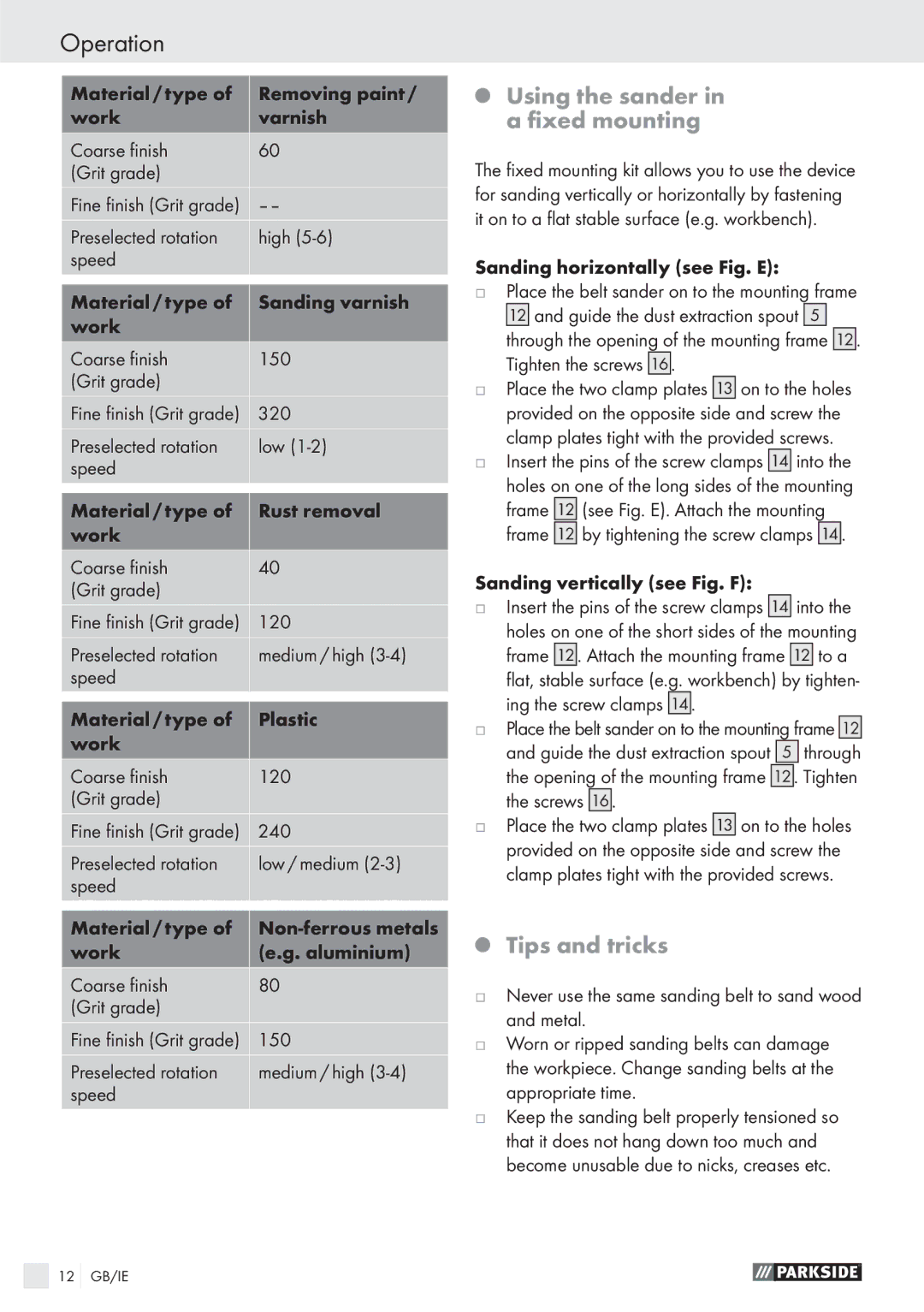
Operation
Material / type of | Removing paint / |
work | varnish |
Coarse finish | 60 |
(Grit grade) |
|
Fine finish (Grit grade) | |
Preselected rotation | high |
speed |
|
Material / type of | Sanding varnish |
work |
|
Coarse finish | 150 |
(Grit grade) |
|
Fine finish (Grit grade) | 320 |
Preselected rotation | low |
speed |
|
Material / type of | Rust removal |
work |
|
Coarse finish | 40 |
(Grit grade) |
|
Fine finish (Grit grade) | 120 |
Preselected rotation | medium / high |
speed |
|
Material / type of | Plastic |
work |
|
Coarse finish | 120 |
(Grit grade) |
|
Fine finish (Grit grade) | 240 |
Preselected rotation | low / medium |
speed |
|
Material / type of | |
work | (e.g. aluminium) |
Coarse finish | 80 |
(Grit grade) |
|
Fine finish (Grit grade) | 150 |
Preselected rotation | medium / high |
speed |
|
Using the sander in a fixed mounting
The fixed mounting kit allows you to use the device for sanding vertically or horizontally by fastening it on to a flat stable surface (e.g. workbench).
Sanding horizontally (see Fig. E):
Place the belt sander on to the mounting frame 12 and guide the dust extraction spout 5 through the opening of the mounting frame 12 . Tighten the screws 16 .
Place the two clamp plates 13 on to the holes provided on the opposite side and screw the clamp plates tight with the provided screws. Insert the pins of the screw clamps 14 into the holes on one of the long sides of the mounting frame 12 (see Fig. E). Attach the mounting frame 12 by tightening the screw clamps 14 .
Sanding vertically (see Fig. F):
Insert the pins of the screw clamps 14 into the holes on one of the short sides of the mounting
frame 12 . Attach the mounting frame 12 to a flat, stable surface (e.g. workbench) by tighten- ing the screw clamps 14 .
Place the belt sander on to the mounting frame 12 and guide the dust extraction spout 5 through the opening of the mounting frame 12 . Tighten the screws 16 .
Place the two clamp plates 13 on to the holes provided on the opposite side and screw the clamp plates tight with the provided screws.
Tips and tricks
Never use the same sanding belt to sand wood and metal.
Worn or ripped sanding belts can damage the workpiece. Change sanding belts at the appropriate time.
Keep the sanding belt properly tensioned so that it does not hang down too much and become unusable due to nicks, creases etc.
12 GB/IE
